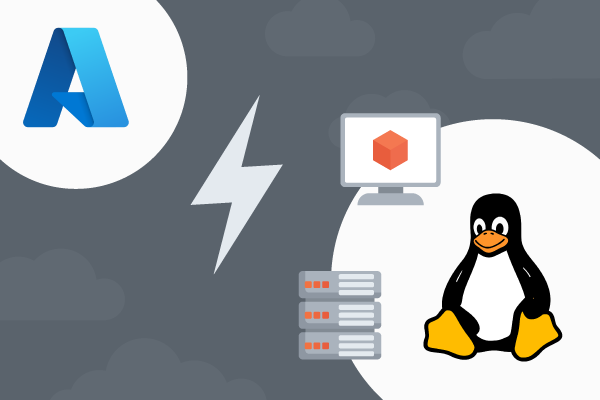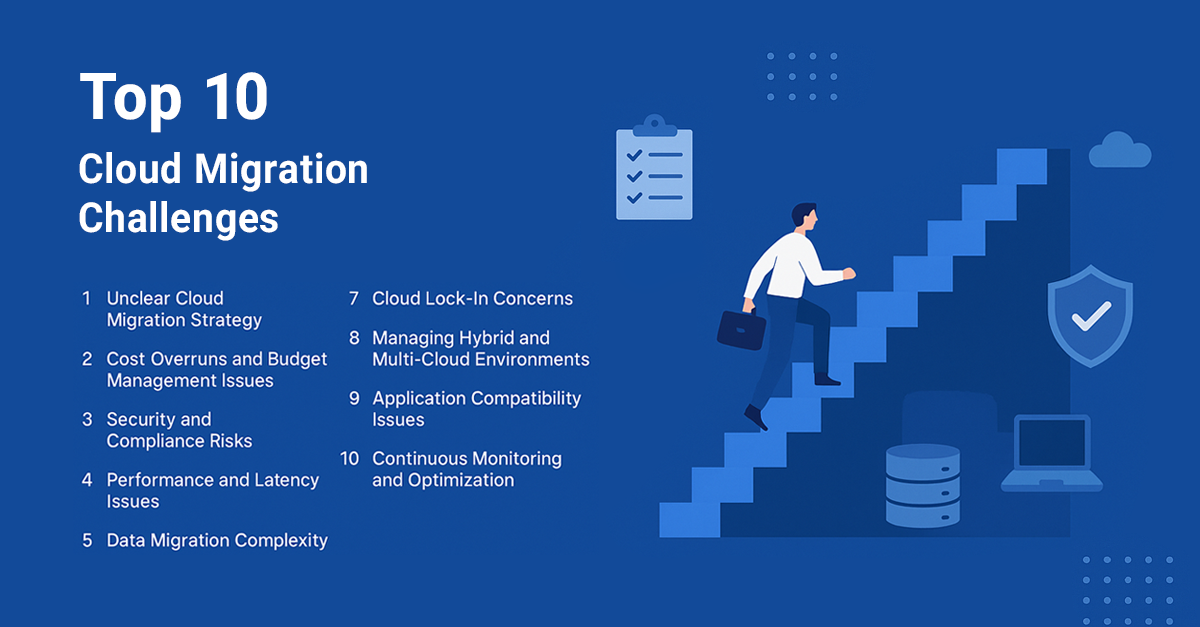Many still associate Microsoft Azure with Windows alone. While that was once true, the cloud landscape has evolved significantly. Today, Azure is one of the leading platforms for running Linux workloads. In fact, more than 60% of the workloads on Azure now run on Linux. If you are searching for the best cloud storage for Linux, Azure is a top-tier solution.
Understanding the Shift: Microsoft and Linux
It’s understandable that some people still see Microsoft as a Windows-only company. For many years, Microsoft’s focus was heavily centered around Windows-based software like Windows Server, SQL Server, and Office. Azure itself was originally marketed as a platform optimized for running Microsoft technologies.
This long-standing association has led many IT professionals to believe that Azure is not suitable for open-source or Linux-based environments. Adding to the confusion, Microsoft’s early relationship with the open-source community was sometimes strained, reinforcing the perception that Microsoft and Linux were at odds.
Furthermore, in Azure’s early days, promotional materials and product development were largely geared toward Windows-centric use cases. This influenced early adopters to view Azure through a narrow lens—one that didn’t reflect its broader capabilities. Even now, some competitors in the cloud space continue to position Azure as a Windows-first platform, despite the dramatic changes in Microsoft’s approach.
Today, however, the landscape is entirely different:
- Most workloads on Azure are Linux-based.
- Azure supports all major Linux distributions, including Ubuntu, Red Hat, SUSE, and Debian.
- Microsoft actively contributes to the Linux kernel and numerous open-source projects.
Debunking Common Misconceptions About Linux on Azure
As businesses increasingly adopt Azure for their cloud strategies, one trend stands out: the rapid growth of Linux workloads on the platform. Yet despite the momentum, several outdated myths persist—myths that may delay or deter organizations from realizing the full potential of running Linux in Azure. Let’s clear up the confusion:
1. “Azure is Just for Windows”
This is one of the most common misbeliefs. In reality, over 60% of Azure cores run Linux-based workloads, making Azure not only Linux-friendly but a leader in Linux cloud adoption. Microsoft’s deep collaboration with Red Hat, Canonical, SUSE, and the broader open-source community ensures robust support for virtually every major Linux distribution.
2. “Linux on Azure is Too Expensive”
Not true. In fact, organizations can realize up to 80% infrastructure savings and as much as 62% lower TCO for PostgreSQL databases on Azure. Thanks to features like Reserved Instances, Spot VMs, and the Azure Hybrid Benefit, Linux workloads can often run more cost-effectively on Azure than on AWS or GCP.
3. “Linux Migrations to Azure Are Risky and Complex”
Azure offers a mature, battle-tested migration framework with tools like Azure Migrate and Database Migration Services. At VIAcode, we take it further — our Linux migration service delivers zero-downtime transitions, powered by precise planning, automation, and post-migration optimization.
And here’s the kicker: many of these migrations can be performed at no cost, thanks to our access to exclusive Microsoft funding programs. So not only can your move to Azure be seamless — it might just be free.
4. “Azure Doesn’t Support Open-Source Databases Well”
Azure provides fully managed PostgreSQL and MySQL services, supporting all major extensions and advanced AI capabilities. For example, pgvector enables AI-ready indexing for generative applications, and Azure’s Flexible Server architecture allows horizontal scaling and granular control, all while maintaining high availability and compliance.
5. “Linux on Azure Isn’t Built for AI Workloads”
Actually, Azure is a powerhouse for AI workloads. With AMD-powered VMs, built-in Azure AI Services, and native integrations with PostgreSQL and Kubernetes, organizations can deploy scalable, AI-enhanced Linux workloads that rival any cloud provider in performance and flexibility.
Why Azure Stands Out for Linux Workloads
While AWS and Google Cloud are also strong players, Azure distinguishes itself with features and benefits specifically tailored to Linux users:
1. Robust Linux Compatibility
Azure provides optimized support for all major Linux distributions. Microsoft works closely with open-source communities to ensure high performance and security for Linux systems on Azure.
2. Seamless and Scalable Cloud Storage
Azure offers a range of storage solutions suited for Linux environments, including Azure Files, Blob Storage, and managed disks. These solutions integrate smoothly with Linux tools, making it easy to store, share, and manage data.
3. AI and Advanced Services Integration
Azure is an excellent platform for deploying AI-enabled applications. Features like PostgreSQL with pgvector and Azure AI services provide powerful capabilities for Linux-based workloads.
4. Cost Efficiency
Azure enables significant cost savings through flexible licensing options and pricing models. Organizations can reduce costs by bringing their existing Red Hat, SUSE, and other supported Linux licenses—such as Ubuntu Pro and Oracle Linux—through Azure Hybrid Benefit. Additionally, Azure supports pay-as-you-go, reserved instances, and spot pricing models to further optimize expenditures, making it a cost-effective platform for a broad range of Linux workloads.
5. Enterprise-Grade Security
With over $20 billion invested in cybersecurity, Microsoft ensures that Linux workloads on Azure are protected by industry-leading tools such as Microsoft Defender for Cloud and Azure Sentinel.
Practical Use Cases: Linux in the Azure Cloud
Let’s consider a few scenarios that showcase why Azure is the best cloud storage for Linux:
Healthcare providers can use Linux on Azure to manage sensitive patient data with high levels of security, compliance, and availability.
For example, a regional hospital network may deploy its electronic health record (EHR) system on Azure using Red Hat Enterprise Linux. With built-in support for HIPAA compliance, encrypted storage, and Azure AI tools, the hospital can analyze patient data to assist in early disease detection, treatment planning, and operational efficiency.
The scalable infrastructure also means it can handle fluctuating demand, such as during a health crisis.
Financial institutions can rely on Azure for mission-critical workloads, using Linux to support high-throughput, low-latency transaction processing.
A digital bank, for instance, may host its core banking platform on Ubuntu VMs running on Azure. With PCI DSS compliance, advanced firewalls, and geo-redundant failover, the bank can ensure secure and uninterrupted service for online transactions.
Azure’s integration with tools like Azure Monitor and Log Analytics also gives financial analysts real-time visibility into system performance and anomalies.
Startups and tech firms can benefit from Azure’s flexible Linux environment to build, test, and scale modern applications.
A SaaS startup, for example, may deploy its web application using Azure Kubernetes Service (AKS) with containerized microservices running on Linux. This setup allows the team to update features rapidly through CI/CD pipelines while maintaining uptime and reliability.
With access to Azure DevOps, GitHub integration, and open-source tools, the startup can innovate quickly and expand globally with minimal overhead
The VIAcode Advantage for Linux on Azure
VIAcode has over two decades of experience as a Microsoft partner, helping organizations not only migrate to Azure but also thrive within it. Our deep focus on Microsoft Azure means we bring specialized knowledge, real-world insights, and proven best practices to each client engagement. VIAcode’s team supports companies across various industries with tailored services that address their unique infrastructure, application, data, and security needs.
From the initial assessment to the final cutover, we guide clients through every phase of their Azure journey. As a post-migration service, our proprietary vBox platform provides a central hub for managing cost, security, and operations, offering real-time visibility and actionable insights. We also assist in architecting resilient and scalable Azure environments that align with each client’s technical and business goals. Our proprietary vBox platform, as a post-migration solution, complements this effort by offering a central hub for managing cost, security, and operations, delivering real-time visibility and actionable insights
VIAcode offers:
- End-to-End Migration Support: Zero-downtime Linux migrations with tools like Azure Migrate and VIAcode’s custom vBox platform
- AI Enablement: Integration of AI capabilities into open-source databases like PostgreSQL using pgvector, Copilot, and Azure OpenAI
- Operational Excellence: Ongoing support through Azure Assist (powered by vBox), covering cost, availability, and compliance monitoring
- Security and Governance: Holistic security reviews, patch management, and policy enforcement for Linux environments
What Makes VIAcode’s Linux on Azure Campaign Unique
The VIAcode Linux Migration Campaign isn’t just about moving workloads to Azure—it’s about setting a new standard for secure, intelligent, and value-driven modernization. What makes this initiative special is how it aligns technical execution with business innovation.
1. AI-Driven Migrations as the New Norm
VIAcode’s insights reveal a growing trend: businesses are increasingly moving Linux workloads to the cloud not only for cost savings but to support advanced capabilities. These include AI-enabled analytics, intelligent search, and real-time insights using tools like Azure OpenAI and PostgreSQL pgvector. Cloud migration is becoming a strategic step toward AI readiness and digital transformation.
2. Microsoft-Backed Funding and Zero-Cost Execution
Thanks to VIAcode’s close-knit partnership with Microsoft, our clients benefit from exclusive access to Microsoft-funded programs—including the Azure Migrate and Modernize (AMM) program. This partnership enables VIAcode to deliver end-to-end migration services—assessment, planning, and execution—at no cost for eligible customers. These fully funded engagements remove the financial hurdles and fast-track our clients’ path to Azure.
3. Integrated Migration + Innovation Framework
VIAcode’s process doesn’t stop at migration. Clients are guided through an integrated lifecycle that includes:
- Solution assessments
- Application and database modernization
- AI-readiness validation
- Long-term optimization through Azure Assist
This journey isn’t just technical—it’s strategic, and it’s built to help clients innovate while cutting infrastructure and operational costs by up to 80%.
4. Deep Partnership and Engineering Collaboration
This campaign leverages VIAcode’s recognized status as a Microsoft Managed Partner, our access to Microsoft funding resulting in a no-cost migration, and our vBox product, which provides deep visibility and prioritized recommendations for Azure cost, security, and operations. Our tight coordination with Microsoft field teams and support from global engineering resources makes VIAcode uniquely equipped to deliver high-impact results.
Best Practices for Cloud Storage in Linux on Azure
To maximize your Linux deployment on Azure, consider these tips:
- Use Azure Files with NFS for shared storage – Azure Files supports the NFS protocol, which allows Linux systems to connect and share files easily over a network, making it ideal for teams or applications that need to work with shared data.
- Leverage Azure Blob Storage for cost-effective object storage – Azure Blob is perfect for storing large amounts of unstructured data like logs, backups, or media files. It’s highly scalable and offers various pricing tiers to keep storage affordable.
- Implement Azure Arc for unified management of hybrid environments – Azure Arc lets you manage your Linux machines whether they are in the cloud, on-premises, or in other environments, all from a single Azure dashboard.
- Choose Azure managed disks for reliability and scalability – These are high-performance disks designed to support Linux virtual machines, offering durability, automated backups, and flexible scaling as your needs grow.
- Enable Microsoft Defender for proactive threat protection – Microsoft Defender provides continuous monitoring and alerts for potential security threats, helping to keep your Linux workloads safe and compliant with industry standards.
Embrace the Future with Azure
The old idea that Microsoft and Linux don’t mix is outdated. Today, Azure is not just Linux-friendly — it is Linux-first in many aspects. It provides the enterprise-grade reliability, developer flexibility, and innovation ecosystem needed to succeed in today’s fast-moving digital landscape.
For businesses and developers seeking the best cloud storage for Linux, Azure offers the right combination of performance, pricing, security, and support. Whether you’re modernizing legacy systems or launching the next big AI-powered application, Azure and VIAcode can help you scale with confidence.
Ready to Get Started?
Explore VIAcode’s free Linux migration assessment and discover how you can reduce costs, enhance security, and unlock innovation on the best cloud for Linux: Microsoft Azure.


